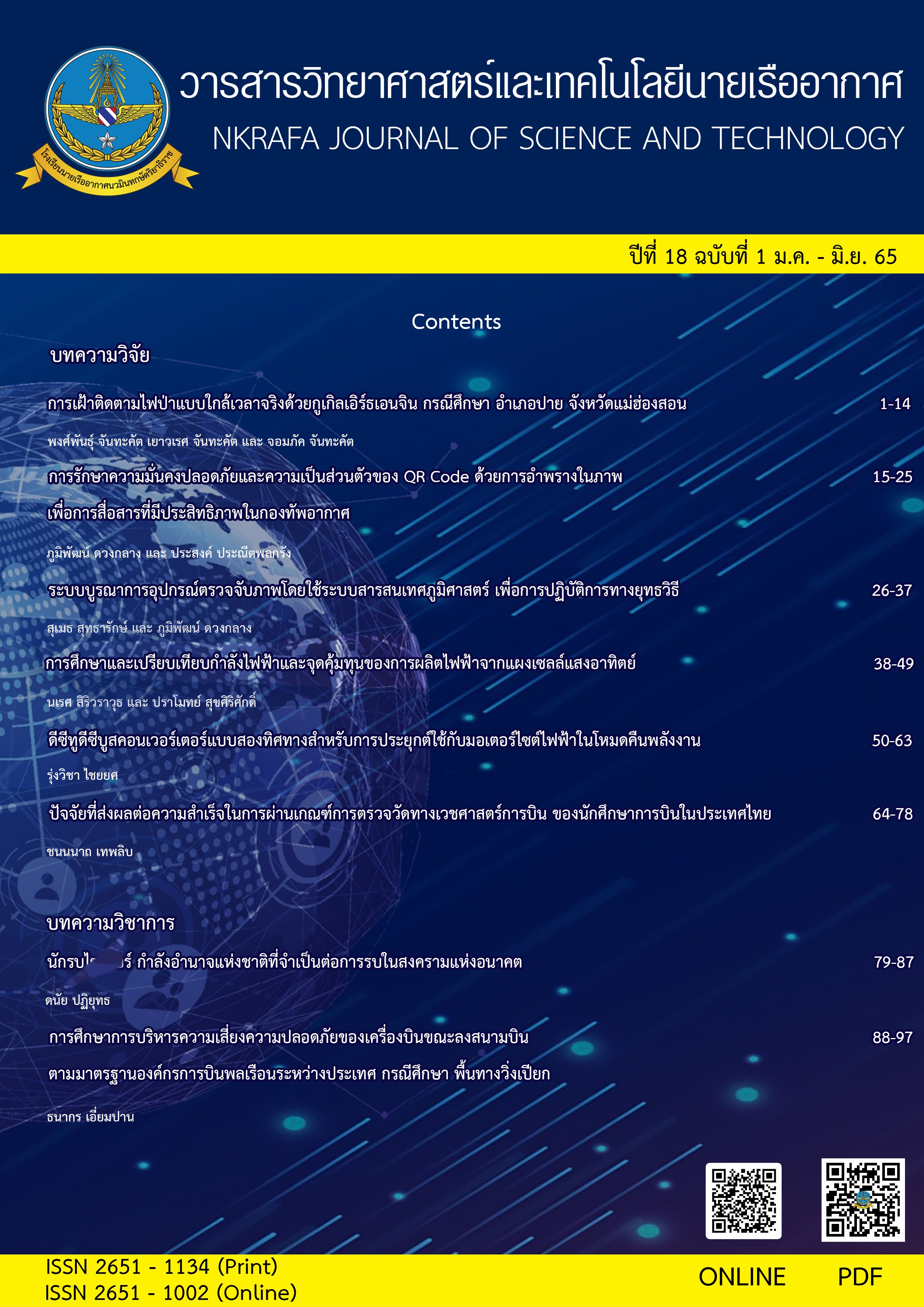A study on aircraft safety risk management while landing at the airport according to the standards of the International Civil Aviation Organization: A Case study of wet runway
Main Article Content
Abstract
The air transport industry plays a very important role in the country's economy. The International Civil Aviation Organization is responsible for setting and maintaining aviation safety standards around the world. According to the International Civil Aviation Organization Air Accident Data, in 2016, more than 50% of the number of air accidents was caused by planes runway excursions. The objective of this academic article is to present guidelines for the management of aircraft safety risk management while landing at the airport according to the standards of the International Civil Aviation Organization: A Case study of wet runway. Action steps concept study related theories and conducting assessments and presenting guidelines for aircraft safety risk management while landing at the airport according to the standards of the International Civil Aviation Organization: A Case study of wet runway. The results of the study found that guidelines for the management of aircraft flight operations when wet runway are: (1) calculating the landing speed of the aircraft (2) considering the runway condition of the destination airport (3) calculating the speed for dynamic hydroplaning (4) Considering the landing speed of the aircraft is greater than the speed for dynamic hydroplaning. Therefore, landing at the airport this time is in the case of hydroplaning. Pilots must be aware of the dangers of hydroplaning.
Article Details

This work is licensed under a Creative Commons Attribution-NonCommercial-NoDerivatives 4.0 International License.
- Content and information in articles published in NKRAFA Journal of Science and Technology are comment and responsibility of authors of articles directly. Journal editorial do no need to agree or share any responsibility.
- NKRAFA Journal of Science and Technology Articles holds the copyright of the content, pictures, images etc. which published in it. If any person or agency require to reuse all or some part of articles, the permission must be obtained from the NKRAFA Journal of Science and Technology.
References
Airbus. (2022) Global Market Forecast 2021-2040. Retrieved on March 10, 2022, from https://www.airbus.com/en/
products-services/commercial-aircraft/market/global-market-forecast
Alexander T. Wells and Clarence C. Rodrigues. (2003). Commercial Aviation Safety.New York: McGraw-Hill.
Australian Transport Safety Bureau, (2009). Runway excursions. Retrieved on March 10, 2022, from https://flightsafety.org/
files/RERR/ATSB%20Report.pdf
Colin. C. (2021). The 3 Types of Hydroplaning and How to Prevent Them. Retrieved on December 21, 2021,
FAA. (2016). Pilot’s handbook of Aeronautical Knowledge. United States Department of Transportation, Federal
Aviation Administration, Oklahoma City.
Gleim. A. (2021). Hazards Associated with Hydroplaning. Retrieved on December 21, 2021, from Error! Hyperlink reference not valid.
International Civil Aviation Organization. (2012). Safety Management Manual (SMM) Third Edition. Retrieved
on October 1, 2020, from https://www.icao.int/sam/documents/rst-smsssp-13/smm_3rd_ed_advance.pdf
International Civil Aviation Organization. (2019). State of Global Aviation Safety. Retrieved on March 10, 2022,
from https://www.icao.int/safety/Documents/ICAO_SR_2019_29082019.pdf
International Civil Aviation Organization. (2022). Safety. Retrieved on March 10, 2022, from https://www.icao.int/
safety/Pages/default.aspx
MENTOUR PILOT. (2565) An analysis of air india flight IX-1344: Runway excursion. Retrieved on March 10, 2022,
from https://mentourpilot.com/an-analysis-of-air-india-flight-ix-1344-runway-excursion/
Royal Thai Air Force. (2014). 737-800 Flight Crew Operations Manual. Seattle Washington:The Boeing Company.
Shappell, S. A. & Wiegmann, D. A. (2003). A Human Error Approach to Aviation Accident Analysis. England,
Ashgate Publishing Limited.


